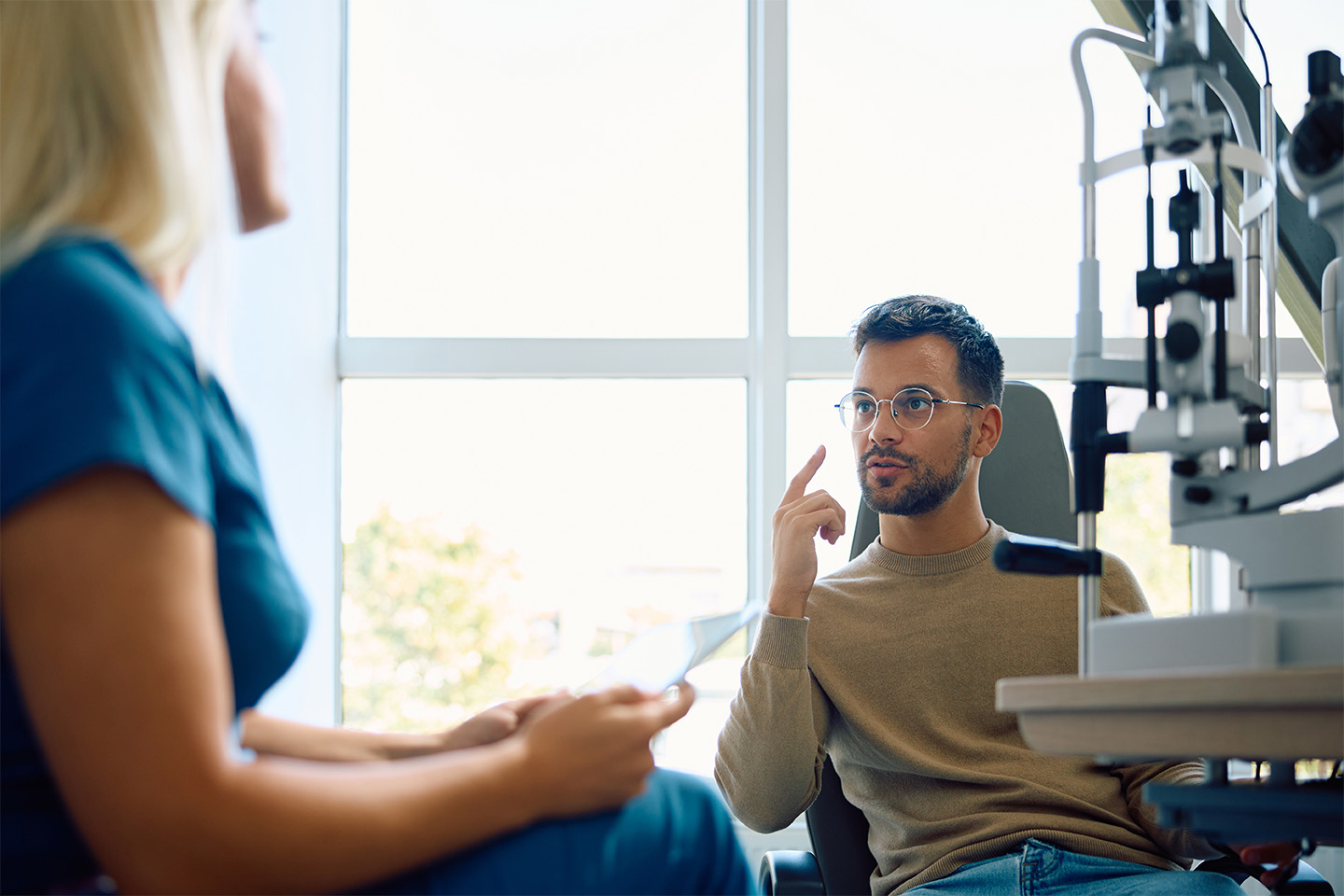Everything You Need to Know about Corneal Abrasions

Don’t ignore that pain in your eye — it could be a corneal abrasion that needs treatment.
The cornea is one of the most important parts of your eye. Like a window, it lets light into the eye and focuses it, allowing you to see clearly. Since the cornea is such an integral part of the eye, any damage to it can cause noticeable discomfort.
One common condition that can affect the cornea is a corneal abrasion, which is essentially a small scratch on the epithelium, or surface, of the cornea. It can happen for a variety of reasons, such as receiving a physical blow to the eye, getting sand in your eye, or using a contact lens improperly.
Corneal abrasions can be minor, but ignoring them can cause infection or even scarring and vision loss. Here’s what you need to know about the symptoms of a corneal abrasion and how to treat them.
Symptoms and Diagnosis
Pain is one of the most noticeable symptoms of a corneal abrasion. The cornea has a very high number of nerve endings, so even a small scratch can result in a significant amount of discomfort. With a corneal abrasion, you may find your eyes are watering more than usual, and your vision might become blurry and sensitive to light. Your eyelid may also twitch intermittently, and it will likely feel like there is something in your eye, even if there isn’t.
If you think you have a corneal abrasion, make an appointment with an eye doctor. They will examine all parts of your eye (including underneath the eyelid) with a magnifier to try and detect any scratches or injuries, even if they’re microscopic. If the injury is especially hard to find, some eye doctors will use a special dye that makes corneal abrasions easier to see.
Treatment
The treatment for a corneal abrasion depends on how severe it is. Mild ones can be treated with a topical anesthesia for pain relief and covered with a patch. The healing will usually happen in one night. A larger or deeper abrasion may take several days to heal and you may need to be prescribed antibiotics.
No matter the size of the abrasion, it’s important that you don’t rub your eyes while it is healing, which can exacerbate the condition. It is recommended that you avoid wearing contacts after treatment until your doctor says it’s safe. After your treatment, you’ll probably have to attend a follow-up appointment to confirm your corneal abrasion is no longer a concern.
If you’re experiencing eye irritation or pain, don’t assume it’ll just go away. You could have a corneal abrasion that needs treatment. The specialists at Kleiman Evangelista Eye Centers are experienced in treating eye conditions like corneal abrasions and will work with you to determine the best treatment method for you. Schedule a consultation with us online or by phone today.
Turn To The Top Eye Doctors In Texas
Check out one of our locations below for the best eye care near you:









